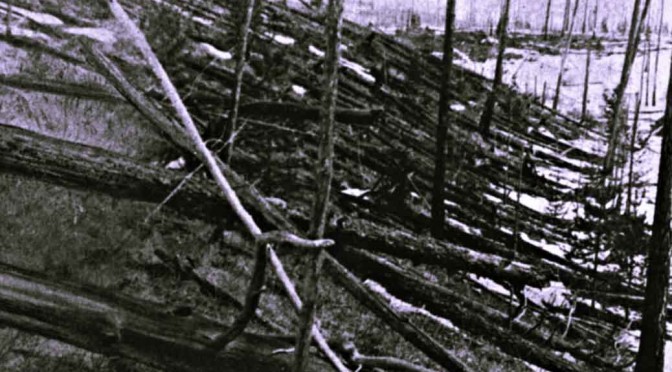By Anupum Pant
In the year 1908 (June 30), a remote part of Siberia experienced something really mysterious and really huge. It was an explosion that took place at about 5-10 km altitude in the air which was estimated to be as powerful as 1000 (or 185 according to NASA) Hiroshima bombs!
No one could ever figure out what really caused it. However, scientists were pretty sure that it was either a huge meteorite of about 100 feet (some say 1000 m) in diameter which crashed into the earth’s atmosphere and disintegrated, or it just bounced off the earth’s atmosphere like a huge skipping stone. Besides the scientific theories, there are a number of other “UFO and alien” stories that have been associated with this event. This was called the Tunguska event.
The sheer size: The explosion was utterly gigantic. So big, that it is still considered to be the most powerful natural explosion in the known history. The shock-waves from the explosion knocked people off their feet, and these people were 40 miles away from where the explosion happened. It wasn’t just people, 80 million trees over an area of 2,150 square kilometres were knocked down in a radial pattern (with trunks pointing away from the epicentre). 80 million! Wow!
It caused a mini earthquake and a NatGeo article says that the lake Checko could have been created due to this impact.
Eyewitness’ account:
Suddenly in the north sky… the sky was split in two, and high above the forest the whole northern part of the sky appeared covered with fire… At that moment there was a bang in the sky and a mighty crash… The crash was followed by a noise like stones falling from the sky, or of guns firing. The earth trembled.
[NASA website]
Had this taken place above a metro city, the city would have been completely levelled by the event. But that is highly unlikely because cities take up a very small fraction of area on the earth’s surface. Moreover, very rarely do such events happen.
What is very likely is that such an event could happen over the part which covers 70% of the earth’s surface – the ocean. Such an event could create a huge Tsunami causing a lot of destruction on land.
